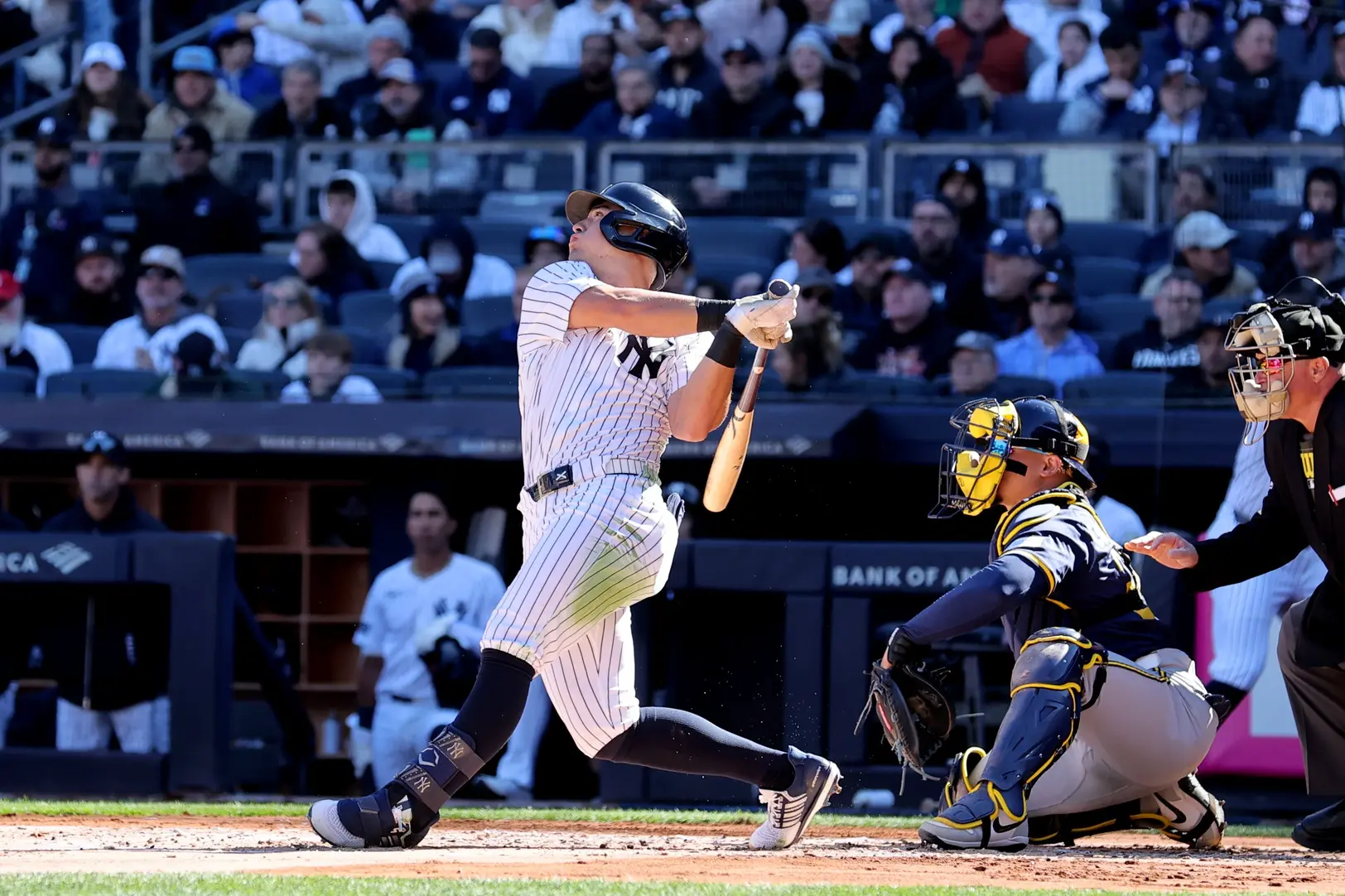Just spoke to #BlueJays Davis Schneider, who’s been (and will continue) using the new ‘torpedo’ bat. “It’s a big ass barrel and I like big barrels” For a guy who gets a lot of high/inside fastballs, makes a lot of sense. Expect this to spread through the league real fast
‘A Lot Of People Are Going To Use It’: Blue Jays Pick Up New ‘Torpedo’ Bats

Photo credit: Brad Penner-Imagn Images
By Mitch Bannon
Mar 30, 2025, 14:39 EDTUpdated: Mar 30, 2025, 14:48 EDT
Nine home runs in a game draws plenty of attention, especially when those blasts come off the barrels of bowling pins.
The innovative ‘torpedo bats’ that Anthony Volpe, Jazz Chisholm, and others used in the New York Yankees’ barrage of bombs on Saturday became the talk of baseball. But inside the Blue Jays clubhouse, it was nothing new. Davis Schneider adopted a similar bat shape for 2025 and more Toronto hitters may soon join him, especially after Saturday’s showcase in the Bronx.
“I think it’s blowing up a little more because the Yankees just hit nine home runs,” Schneider said. “But I feel like a lot of people are going to use it, honestly.”
While the Yankees’ bat innovation came from the mind of “literal genius MIT physicist” Aaron Leanhardt, former Blue Jay Kevin Smith said via X, a B45 Baseball brand rep brought Schneider the bat. The baseball gear company did testing, Schneider said, finding that many players mishit the ball near the label of the bat and decided to move the barrel down to increase production on those miscues. The result was a torpedo or bowling pin shaped barrel, sliding the densest part of the bat down closer to where players more often make contact.
“It’s a big ass barrel,” Schneider said. “And I like big barrels.”
The odd barrel shape drew rulebook questions from fans online and even Bo Bichette said Sunday morning he wasn’t sure if it was legal or not. But an MLB spokesperson told The Athletic the bats break no rules.
For Schneider, getting used to the new bat was simple. It’s the same weight as his old stick (31 ounces) and feels similar when swinging, the utility man said. Ernie Clement has test run the bat in the cage before and is thinking about bringing it into games, as well.
Clement hopes the bat shape will help keep his hands close to the body when swinging, as that’s when he feels best. Schneider, though, seems like the exact type of player the torpedos are designed for. The 26-year-old stands close to the plate and sees plenty of high fastballs (52% of all heaters he saw last year were at the top or above the zone), so much of his contact comes off the inside part of his bat. He hit just .133 on high-inside fastballs last year. With the new bat shape, some hits that flared off the label of Schneider’s bat may exit with new juice.
“I feel like guys with either shorter arms or who kind of crowd the plate a little bit, it’s gonna help a little bit just because you’re not gonna get jammed,” Schneider said.
Players who stand further from the plate and get their arms fully extended might not see the same benefits. Aaron Judge, for example, told Chris Kirschner he won’t be using the torpedo. Bichette, who has used the same bat since he was 15 years old, doesn’t plan on making an in-season bat change any time soon, either.
For a guy like Clement who constantly tweaks — borrowing teammates’ bats with varying lengths and weights all throughout a season — testing the newest innovation is a no-brainer. Whether it results in nine-homer days, we’ll have to see.
“You still have to hit it,” Clement said. “If you square it up with a normal bat, it’s a home run as well. I don’t think it’s a huge difference, but I think for certain guys it’ll help and for certain guys it won’t matter.”
Breaking News
- Heyman: Yankees, Dodgers and Cubs among interested suitors for Bo Bichette
- Blue Jays: Examining the financials on a potential Bo Bichette contract
- Report: Japanese right-hander Tatsuya Imai signs three-year deal with the Houston Astros
- Looking at Myles Straw’s future with the Toronto Blue Jays
- Report: Josh Winckowski returns to Blue Jays on two-year, minor-league deal

